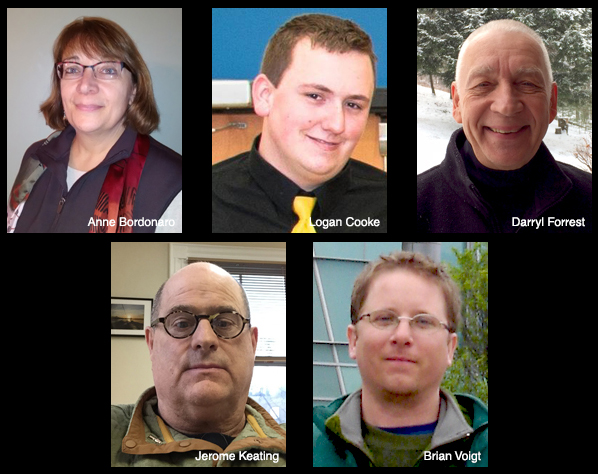At Town Meeting on March 1, Waitsfield voters will elect two townspeople to the select board. There are five people running for the two seats. Logan Cooke, who currently holds a two-year seat on the board, is running for re-election and is being challenged for that seat by Anne Bordonaro and Jerome Keating. Brian Voigt is seeking a three-year term on the Waitsfield Select Board. Scott Kingsbury, who is not running for re-election, currently holds that term. Darryl Forrest is also running for the three-year term on the board. The Valley Reporter asked the candidates to answer three questions this week. Their answers are below. More questions will follow next week.
VR: What are your thoughts on the West Village sidewalk?
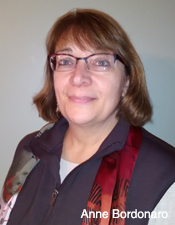 Bordonaro: I do not support installing a sidewalk on the west side of Main Street. I supported installation of the sidewalk on the east side of the street and am happy to see how much it is used. However, there is already safe access to the businesses and residences on the west side of the street and people may cross the road to walk on the sidewalk if they prefer. This is necessary along all the other sections of the sidewalk and has not caused a problem. Installing a sidewalk on the west side of the street would needlessly disrupt the parking and street appearance of the small businesses and residences on that side and would also involve unnecessary additional costs, both for construction and maintenance. I think the sidewalk discussion has been emblematic of problems with the way some decisions have been made in the past.
Bordonaro: I do not support installing a sidewalk on the west side of Main Street. I supported installation of the sidewalk on the east side of the street and am happy to see how much it is used. However, there is already safe access to the businesses and residences on the west side of the street and people may cross the road to walk on the sidewalk if they prefer. This is necessary along all the other sections of the sidewalk and has not caused a problem. Installing a sidewalk on the west side of the street would needlessly disrupt the parking and street appearance of the small businesses and residences on that side and would also involve unnecessary additional costs, both for construction and maintenance. I think the sidewalk discussion has been emblematic of problems with the way some decisions have been made in the past.
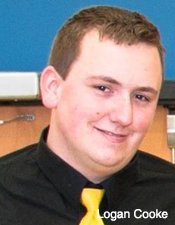 Cooke: The first thing that needs to be said is I think everyone is in agreement that pedestrian infrastructure is important to our community. However, this project worries me more and more as it goes forward. Although the project is 90 percent funded by grant money, the scope of the work continues to grow as people start seeing a grandiose and bloated view of what the sidewalk on that side of the street should look like. Bump-outs, streetlights and several pedestrian crossings are just some of the ideas that have been brought forward. Furthermore, the project will cause several business signs and parking to be relocated or eliminated. I feel that this is a lot to sacrifice for an area that already has a pavement sidewalk. As we move forward with this project, we must ensure there that we are not negatively impacting the businesses for a "nice to have" project.
Cooke: The first thing that needs to be said is I think everyone is in agreement that pedestrian infrastructure is important to our community. However, this project worries me more and more as it goes forward. Although the project is 90 percent funded by grant money, the scope of the work continues to grow as people start seeing a grandiose and bloated view of what the sidewalk on that side of the street should look like. Bump-outs, streetlights and several pedestrian crossings are just some of the ideas that have been brought forward. Furthermore, the project will cause several business signs and parking to be relocated or eliminated. I feel that this is a lot to sacrifice for an area that already has a pavement sidewalk. As we move forward with this project, we must ensure there that we are not negatively impacting the businesses for a "nice to have" project.
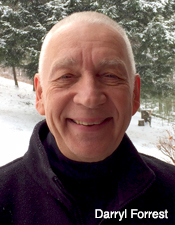 Forrest: The select board will be getting a second look at revised plans for the west side sidewalk. They correctly rejected the first plans. There was significant impact on businesses with the loss of parking spaces. The task force should come back to the select board with a much simpler plan and with abutter’s approval. Making this a simpler plan may be complicated because it is a VTrans grant and the state must approve the plan. The addition of crosswalks is a plus, but the bump-outs required will change the character of the town.
Forrest: The select board will be getting a second look at revised plans for the west side sidewalk. They correctly rejected the first plans. There was significant impact on businesses with the loss of parking spaces. The task force should come back to the select board with a much simpler plan and with abutter’s approval. Making this a simpler plan may be complicated because it is a VTrans grant and the state must approve the plan. The addition of crosswalks is a plus, but the bump-outs required will change the character of the town.
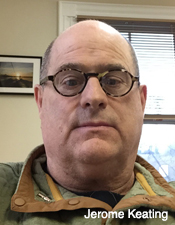 Keating: I believe the answer is no to the west side sidewalk. I believe we need to finish ongoing projects before taking on new ones regardless of potential grant money. Remember, with grant money comes a lot of state regulations. One of my main objectives is to reel in spending to what is a community need, not a community wish. I believe a properly designated crosswalk will achieve a safe walking route to that area and avoid disrupting the businesses' access points. Lastly, in my view, the increased use of cement is destroying our beautiful and green village.
Keating: I believe the answer is no to the west side sidewalk. I believe we need to finish ongoing projects before taking on new ones regardless of potential grant money. Remember, with grant money comes a lot of state regulations. One of my main objectives is to reel in spending to what is a community need, not a community wish. I believe a properly designated crosswalk will achieve a safe walking route to that area and avoid disrupting the businesses' access points. Lastly, in my view, the increased use of cement is destroying our beautiful and green village.
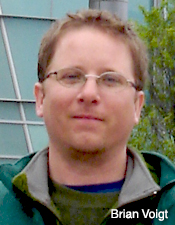 Voigt: I support the completion of the west side sidewalk. One way to support local businesses is to invest in the infrastructure that will encourage people to get out of their cars, to move at a leisurely pace through areas of commerce and afford the time, space and safety to discover hidden gems (restaurants and shops) along the way. Pedestrian corridors offer business and marketing opportunities that don’t exist for automobile traffic. Additionally, it’s not enough to simply encourage people to pursue alternative forms of transportation without providing the infrastructure to support them. Finally, by taking advantage of a combination of private (when accessible) and public lands, including road network right of ways, we are better able to complement the efforts of entities like the Mad River Path Association and the Mad River Valley Planning District in the completion of a Valleywide pedestrian trail network providing access to shopping, dining and recreation.
Voigt: I support the completion of the west side sidewalk. One way to support local businesses is to invest in the infrastructure that will encourage people to get out of their cars, to move at a leisurely pace through areas of commerce and afford the time, space and safety to discover hidden gems (restaurants and shops) along the way. Pedestrian corridors offer business and marketing opportunities that don’t exist for automobile traffic. Additionally, it’s not enough to simply encourage people to pursue alternative forms of transportation without providing the infrastructure to support them. Finally, by taking advantage of a combination of private (when accessible) and public lands, including road network right of ways, we are better able to complement the efforts of entities like the Mad River Path Association and the Mad River Valley Planning District in the completion of a Valleywide pedestrian trail network providing access to shopping, dining and recreation.
VR: What is the most important issue facing Waitsfield this year and in the next five years?
Bordonaro: The most important issue facing Waitsfield this year is to restore public confidence in the board’s decision-making process. First, the board must re-examine its process to ensure transparency. Second, it must inventory and prioritize ongoing and anticipated projects, acquisitions and infrastructure maintenance. We must concentrate on finishing existing projects (like the bridge) in a timely and cost-effective manner. Beyond that, we are approaching renewal of our Town Plan in 2017. The upcoming year is an optimal time for the board and planning commission to collaborate to investigate and update residents’ priorities regarding the town’s future. So much has happened since the current Town Plan became effective in 2012: the town office project, the Bridge Street project, the pocket park, the water project, sidewalks, etc. We need to step back and collectively re-evaluate where we want to go from here. The board should play a key role in this process.
Cooke: The most important issue we face is actually the culmination of several different projects. We have projects that are in the final phases and a couple that need to be started on the right foot. In the next year, we will be wrapping up the town office, repairs to the covered bridge and following through with several decentralized wastewater projects. Secondly, the west side sidewalk and pocket park will need oversight and execution if prudent.
In the future, we as a town need to focus on improving recreation opportunities for our families while also being prudent when spending. Joslin Hill needs a rebuild, which will require a lot of effort. Also, the future of Mad River Park should be on the forefront as well, as this would be a huge loss if it were sold. Lastly, finding a use for the Munn site should also be a priority.
Forrest: The town always has issues as exemplified by the board agendas. The unforeseen issues are usually most often the most difficult to address. Expense control is the most important issue this year. The town can no longer afford to have cost overruns on capital expenditures. A major capital expense is completing and moving into the new town office in the spring/summer of 2016. The cost of the water main break that was caused by the state’s subcontractor is still to be settled. Determining the future of the Munn field will be an interesting issue. Being transparent with this issue is of utmost importance. The west side sidewalk is scheduled along with one major culvert replacement on Common Road. Three major paving projects are in the next five years – Old County Road, Joslin Hill, and Warren-Waitsfield Road. These paving projects are in the capital budget plan and must be completed on budget.
Keating: There are three main issues our town needs to address. Fiscal responsibility is first and foremost. It is the select board’s responsibility to spend money in a way that does not burden the town and its constituents. Secondly, we need to develop a plan to attract businesses and families to plant roots. Thus, we need to promote business-friendly projects, listen to what the business community needs for prosperity and be forward thinking in terms of why families would want to move to Waitsfield. It certainly deserves thought of how to grow our community. Thirdly, I’ll not only listen but act upon input from the community and find common ground. Working together we’ll find better solutions and reduce the noise that seems to be constantly simmering. Most of these issues could have been easily resolved and harmony promoted within the community. I wish to commit my energy to these issues.
Voigt: This year, the proposed pocket park. This project has, unfortunately, become divisive, obscuring what otherwise should be viewed as an opportunity to develop a small testament to the way the we came together in the wake of Tropical Storm Irene to tear down and rebuild the damaged pieces of our community. Over the longer term we need to continue to remember the lessons of Tropical Storm Irene as we work towards developing a more resilient community. This effort will better prepare us to accommodate future flooding with minimal damage to property and infrastructure, but also ready us for impending state regulation under the Lake Champlain clean effort that will affect the way(s) we manage and regulate our farms, forests, parking lots, dirt roads and new development. Careful consideration of both regulatory and nonregulatory measures that can both improve water quality and minimize future storm damage is an effort that is worthy of all of our engagement.
VR: What makes for a successful select board?
Bordonaro: A successful board is one where the chair and town administrator together set a specific agenda for each meeting, with limited time allotted for each issue and specific motions to be voted upon. Then they stick to it. At the conclusion of each meeting, they determine which issues have been resolved and which need further work. Work is done before the next meeting to move issues forward (e.g., researching costs or legal ramifications). A successful board gathers broad public input early in the process of consideration of an issue. Then, it puts together a specific proposal regarding that issue, guided by that input, the Town Plan and the budget. It presents its proposal to the public at a Town Meeting for their consideration and then implements the majority decision. A successful board is proactive, not reactive. It is transparent, uses time efficiently and uses resources prudently.
Cooke: The first thing a select board needs is cooperation. The five individuals don't need to always agree with each other, but they do need to be able to find common ground. The second successful makeup to the board is leadership. There are times when an individual needs to step up to either move a process forward or resolve issues. Lastly, the most important aspect of the select board is the ability to put personal feelings aside for the sake of the town. When the board fights or digs their heels in, not only does it hurt the credibility of the local government, it definitely isn't productive. When you have all of these things, it leads to a board that serves its purpose: to balance the budget and minimize spending, to keep day-to-day operations flowing, developing a plan for capital projects and earning the trust of the residents of the town.
Forrest: A successful select board is one that establishes goals, has no hidden agendas, stays organized, is transparent and listens to and is responsive to the citizens. Even though the select board is made up of people with diverse backgrounds, it must remain harmonious.
Keating: A successful select board needs diversity and the ability to operate with an open mind without compromising its mission statement. However, the key is diversity and in my view the best way to promote diversity and an influx of new ideas is a measured rotation of board members. Term limits is the best way to achieve this diversity. Additionally, the select board needs to listen well to all viewpoints of the town and act on what is heard from the community. The community needs to believe it has a voice and not feel that the select board will do what it wants without question. One of my goals is to attract more community participation at these meetings and the only way to achieve this is to make everyone feel welcome.
Voigt: A successful select board should include diverse voices representing different walks of life spanning multiple generations of residents who come together to solve town problems in an organized, inclusive and deliberative manner. The board should exhibit a mutual respect for what each member and the public brings to the table. A successful select board is not a permanent select board. Demographics, development and demand for services and amenities change over time. The composition of the select board should reflect these changes by relying on the energy and ideas of new recruits to continually move towards the goals and ambitions that are identified through Town Meeting, public forums and the development of a town plan. A successful select board is able to form a consensus around a decision after hearing input from residents (and occasionally hired experts), and then serves as the champion of these projects, ensuring timely completion within budgetary constraints.


